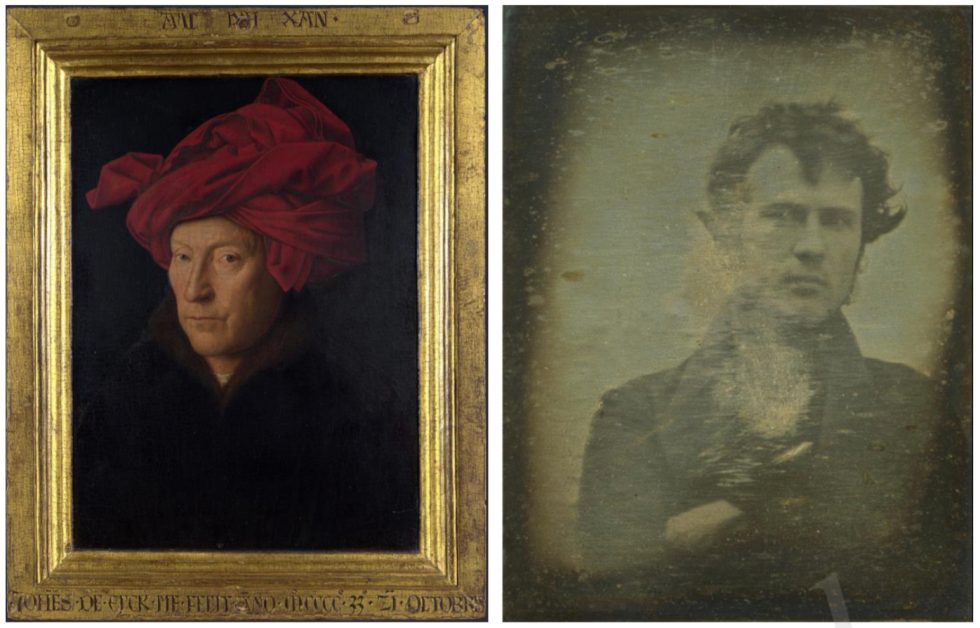
In 1433, artist Jan van Eyck invented an entirely new genre of painting while sitting quietly in his studio in Bruges. He did it with the help of a scientific breakthrough which allowed German engineers to create some of the world’s first high-quality mirrors. The new German mirrors were made by coating glass with an amalgam of tin and mercury. Reflections in these mirrors were sharper than anything the world had ever seen, and they led to van Eyck’s crazy idea to create a self-portrait.
Over the next century, as the Renaissance blossomed with experimentation in science and art in Europe, self-portraits became a kind of craze. Albrecht Dürer, artist and mathematician, is famous for a series of self-portraits he created in the late 15th and early 16th centuries. By the 19th and 20th centuries, artists like Vincent van Gogh and Frida Kahlo were creating surreal and abstract self-portraits to express intense emotions. In a sense, argues University of Bamburg cognitive scientist Claus-Christian Carbon, they were anticipating today’s selfies, in which people use filters and props to convey a feeling.




